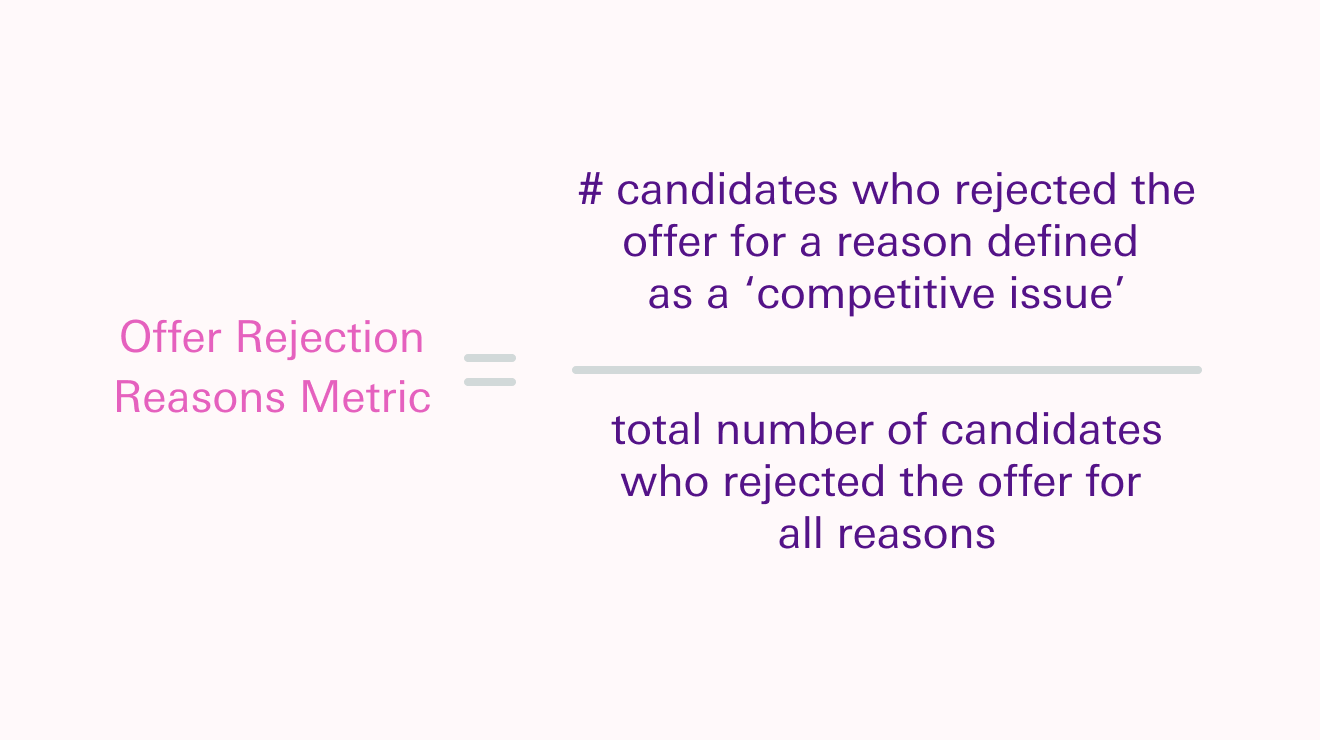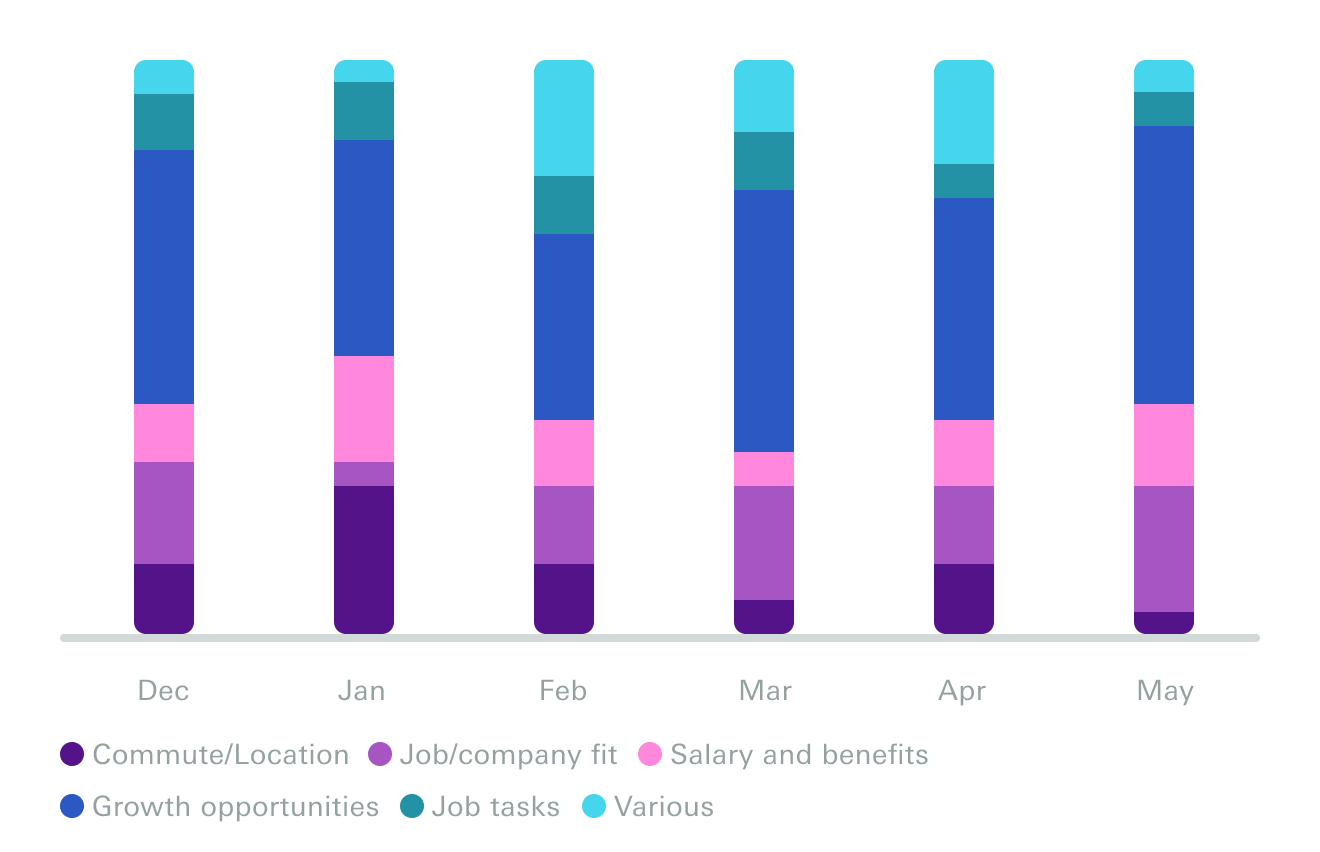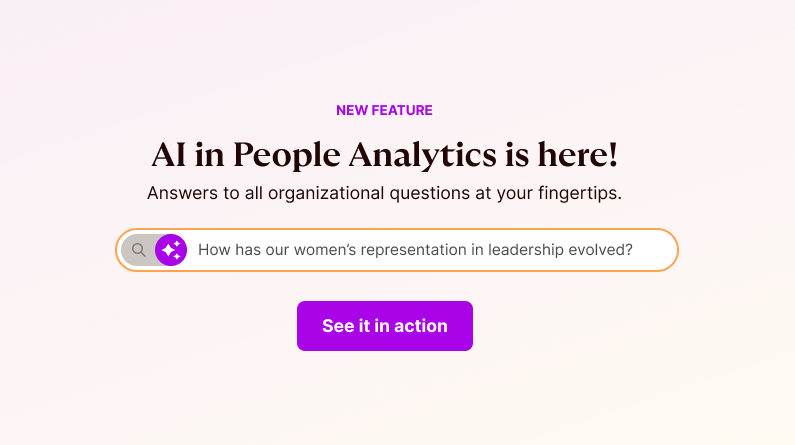See how to close the gap between what you’re offering and what candidates want.
It’s not fun to get rejected. Whether it’s by a job candidate, an academic institution, or a Tinder date, we’re left wondering what went wrong.
Our offer rejection reasons metric shows us the key reasons why our desired candidates rejected our offer. Unlike in a dating scenario, romantic attraction shouldn’t be on the list!
So just how attractive is your offer to the top talent you’re targeting?
If you’re hiring from an in-demand group, like software engineers or MBA grads, your candidates may be getting very attractive alternatives. You might feel frustrated, thinking of how you could compete with huge bonuses or five to six figures in stock units per year. But those aren’t the only features that candidates want.
To focus on the right comparisons, you need to face the rejection head-on. But bring that tub of ice cream from the breakup if you need!
How do I calculate our offer rejection reasons metric?
First, you need the categories of rejections. Each candidate may be unique, but their reasons aren’t. Keeping each candidate’s reasons for rejection separate will block you from seeing any patterns, so we’ll need to cluster the rejection reasons.
Some common reasons may include:
- the commute / location
- the job or company fit
- salary and benefits
- growth opportunities
- job tasks
- personal/family reasons
- leaving the workforce
- staying at current company
- stopped looking
- and more
Now, we know you can’t change everything about your company on a whim for a candidate. And you shouldn’t.
This means we can classify those reasons above into two categories: competitive issues and factors out of our control.
For example, the commute may be an issue for one candidate, but we can’t move our office (or their house!) to fix that! Competitive factors include salary and benefits or growth opportunities, where factors out of your control include personal/family reasons or leaving the workforce.
From there, you divide the number of rejections due to competitive issues from the total number of rejections to find the job offer competitiveness metric.

It also helps to see how all these reasons stack up against each other. To do this, you can show the percentage of candidates who mentioned each rejection reason in a graph like this one below.

What to do about the offer rejection rate?
Even if this competitiveness score seems discouraging, remember that all your accepted offers are competitive too! It’s more likely that your accepted offers outnumber rejected ones overall, if you’re anything like the average company we talked about in this previous post. It might help to consider what is working for you, along with what isn’t.
If candidates are rejecting your offers for reasons you can control, this gives you a plan to reduce your rejection rate. Perhaps the role’s progression wasn’t clear; you could communicate this better in recruitment, job descriptions, and FAQs about the company. Maybe your benefits aren’t competitive with new norms around flexibility or with industry retirement contributions. Small changes to recruitment can have a big impact on how well you can hire talented people.
How do I answer this question in Orgnostic?
You should start tracking information about rejections in your ATS. Then you can connect your ATS directly to Orgnostic and see why your offers get rejected, right away. These apps usually have the option to label reasons for rejection. Split this up by business line or team to see which issues are driving rejections in each part of your company. The world is your oyster with this feedback!

From the Talent Acquisition series: